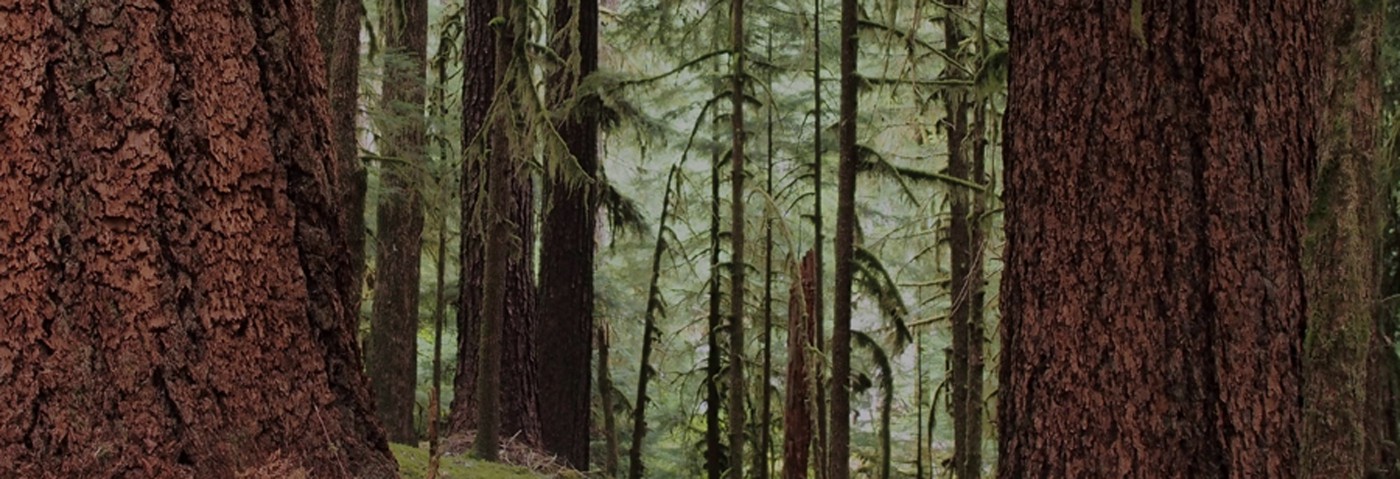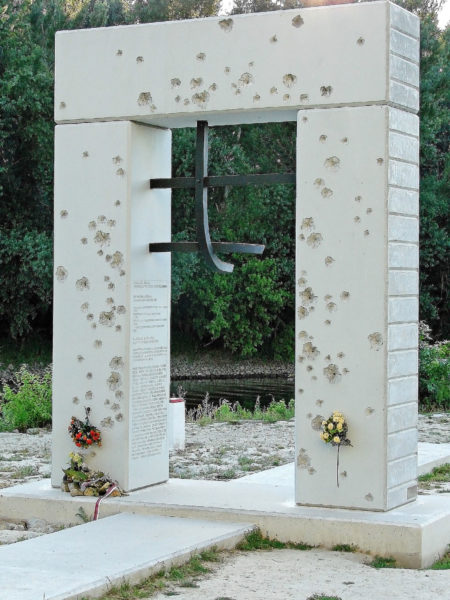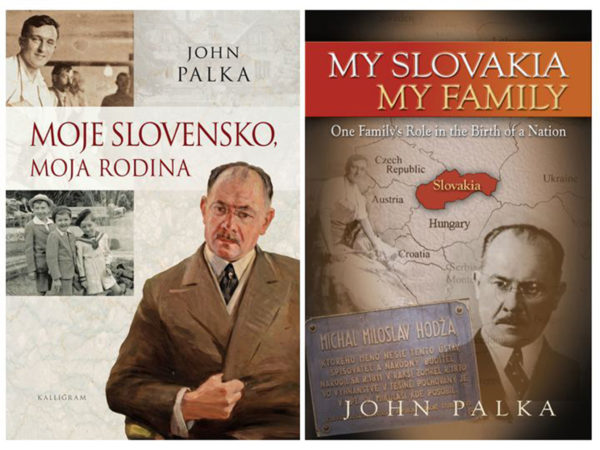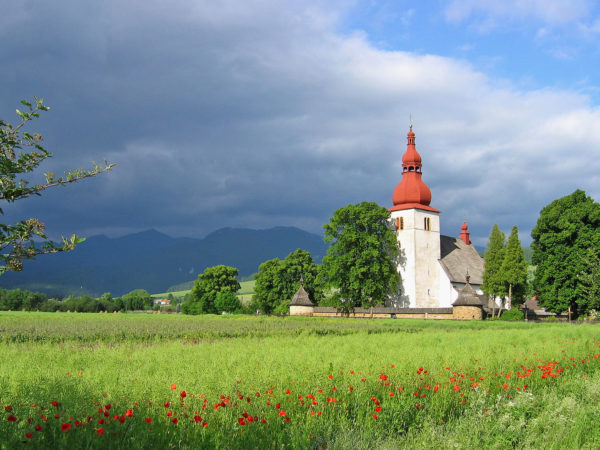Personal Roots
By John Palka — Posted December 2, 2018
A change is coming to Nature’s Depths. I will use today’s post, the first in the site’s fourth year, to explain what this change is and why I am introducing it.
It’s hard to believe that Nature’s Depths launched three full years ago, on November 15th, 2015, with a piece called “To See a World in a Grain of Sand.” Since then, there have been forty-five posts.
These posts have been a labor of love for me, based on my forty years of work as a neuroscientist but ranging far and wide beyond that discipline. I have asked questions like these:
- Why, during a full lunar eclipse, does the moon often look blood red?
- How does water rise 200 feet from the soil to the tops of tall trees?
- How do butterfly wings get their stunning patterns?
- How does the energy of the Sun support life on Earth—and what, in fact, is life?
Needless to say, the questions are far from being exhausted. For a time, however, I am going to slow my rate of asking questions like this so that I can focus my energies on a topic that is, for me, both more personal and more immediately pressing.
THE PERSON BEHIND THE POSTS
Some readers of Nature’s Depths know that I am not only an inquisitive lover of Nature, I am also someone who has an unusual life story. That story is now prompting me to change how I deal with Nature’s Depths. To explain further, let me share a few highlights from my life.
I first came to America in 1941 at the age of two as a refugee from Hitler. My parents were forced to flee from the broken remnants of their home country of Czechoslovakia, primarily because of my whole family’s staunchly anti-Nazi stance and involvement in the anti-Nazi resistance.
My parents and I returned to Czechoslovakia as soon after the end of World War II as was possible, and took up an idyllic life in my father’s home town of Liptovský Svätý Mikuláš in the Slovak portion of the country. Our idyll did not last long, however. A little over a year later, in February of 1948, the Communists took over Czechoslovakia. By April they had arrested my father, thrown him into prison, and placed him in solitary confinement. He was accused of anti-state activities, a charge that, had he been convicted, could have carried the death penalty. Fortunately, during the summer of 1948 he was released. Released, but not a free man. He was thrown out of his position in the leather factory that had been the family business for 150 years, followed incessantly by agents of the state, and subject to re-arrest at any moment.
Rather than face ongoing terror, my parents decided to try to escape from Czechoslovakia a second time. I remember our escape very vividly— waiting for the moon to be obscured by clouds so we couldn’t be seen, carefully watching the tall guard towers with their machine guns and searchlights, holding tight to the rope that provided the only way for our group of six to stay together in the darkness and the mist, alternately running and dropping to the ground across the open, roughly plowed land at the border, crawling under the barbed wire, and repeating whole process until we crossed the remainder of the plowed land and entered the forest on the other side. This was the Russian Zone of post-war Austria, however, so we still far from safety. Obviously, we ultimately made it.
Our escape took place in March of 1949, not much more than two years after our joyful return home in December of 1946, and a few months shy of my tenth birthday.
If you visit Slovakia today, you will see important reminders of the Communist era. For example, this plain concrete memorial stands just a few miles from where we made our escape. The twisted iron bars represent the barbed wire, the arch the gateway to freedom, and the pockmarks the bullets that were fired at people like us who were trying to escape. It is estimated that around a quarter of a million people escaped successfully from Czechoslovakia following the Communist takeover. The text on the inner surface of the memorial arch carries the names of the over four hundred who were less fortunate in their attempt—who were shot to death or electrocuted along the Slovak border. Many more perished trying to flee from the Czech part of Czechoslovakia.
In December of 1949 we were back in the United States, refugees once again. In 1954, I was naturalized and became an American citizen. America has been my home ever since.
MY SLOVAK ROOTS TODAY
The present year, 2018, is the 100thanniversary of the end of World War I and with it the founding of the country into which I was born, Czechoslovakia. In the meantime, the country’s two major historical, ethnic, and linguistic components—the Czechs and the Slovaks—have separated to form two independent states, the Czech Republic and the Slovak Republic or Slovakia. They remain wonderful neighbors, however, and during this entire year both have been celebrating the 100thanniversary of the founding of their joint state. This year also marks the 80thanniversary of the infamous Munich Pact of 1938, which delivered Czechoslovakia into the hands of Hitler; the 70thanniversary of the Communist coup in Czechoslovakia in 1948 that launched forty years of cruel dictatorship; the 50thanniversary of the tank-led invasion of Czechoslovakia in 1968, in which Russian and other Soviet-block countries crushed the great experiment in liberalization known as the Prague Spring; and the 25thanniversary of the establishment (on January 1, 1993) of the independent Czech and Slovak Republics. There has been an extraordinary amount of history, both joyous and tragic, to be commemorated this year.
During the year, I have been honored by numerous invitations to participate in observances relating to these many anniversaries, to present talks on various occasions, and to write articles that would bring to life as vividly as possible the histories of Czechoslovakia and especially my own Slovakia. After a good deal of thought, I have decided to rework and expand this material into a book. My goal is to offer the little-known story of Slovakia, as well as my own interpretation of that story and my vision for Slovakia’s future, to a wider audience.
Even though this book will be modest in scope, I know that writing it will be a major undertaking. I want to be able to focus on this task so that I can complete it in a fairly short time, hopefully within about a year. Preparing posts for Nature’s Depths each month, and having them expertly reviewed and professionally edited, is a demanding process, especially given the unrelenting timeline. For this reason, I am shifting the balance between telling Nature’s story and telling Slovakia’s story until this new book has been written.
The practical manifestation of this shift in balance is simple—I will publish posts on Nature’s Depths quarterly rather than monthly. You will continue to receive brief email notifications when new posts go up. Nothing will change except for the frequency of the posts.
TWO INVITATIONS
If you have an interest in my life story, or in how the stories of my family and of Slovakia are intertwined, I invite you look at my earlier book, published in Slovakia in 2010 and in the United States in 2012 as My Slovakia, My Family.
It is available both through Amazon and through my other website, www.jpalka.com. On this site you will also find many photographs that I have taken in Slovakia over the years. Brief video clips (1, 2, 3, 4, 5) of my own life story have been posted by the Oral History Project of the National Czech and Slovak Museum and Library.
The Slovak land is full of scenes like this (Church of St. Ladislav in the village of Liptovské Matiášovce, dating back to the early 1500s) that remind us that human life and the world of nature are fully intertwined. Such scenes prompt me to repeat the invitation that I have offered you so many times before: Pay attention, and open both your mind and your heart to Nature. As you do, remember that we humans are not isolated observers. No matter where we find ourselves, we are as much a part of Nature as are the trees and the eagles and the mycorrhizae and all the teeming life on the planet that Carl Sagan so evocatively called the Pale Blue Dot!




So happy to hear of this project! Drzim ti palce! May I share this post on Facebook?
THANK YOU, Paul. And yes please, by all means share as appropriate.
Dear Johnny, I am excited to read about your journey, both past and present (and future too, I imagine). Thank you for letting us have a greater glimpse of your world. I miss seeing you and am so glad you’re part of my life.
Kit Ketcham
Thank You, Kit. Who knows what this turn in the road will bring!
What a story — I had no idea! Will miss the monthly read but revel in what you are doing instead.
Thanks, Ursula. We all have our stories, don’t we? And they always shape what we do in one way or another.
John – Great that you are doing this. You and I had gotten together on Whidbey to discuss assisted migration of Coast Redwoods… yet we ended up most of the time exchanging stories of our eastern Europe heritages (though in my case it was heresay about my immigrant grandparents). Your story is absolutely fascinating (as summarized above, too). And, unlike many others who share such a story, you are still alive. So go do it! (P.S. Fun to see that Ursula Goodenough reads your posts.)
Hi, Connie. Yes, I remember our conversation well. The East European angle caught me completely by surprise, and that made it all the more delightful. Thanks for your support.
Wonderful project Johnny..!! I will so much enjoy your efforts..!! -Marty
Thanks, Marty. The operative word is “efforts!” I love doing it, but working toward something on a larger scale takes a lot of work, as I well know from my previous book. That one took six years for the first (Slovak) edition!
John, I will miss the monthly stories, but perhaps enjoy the quarterly posts more because of their infrequency… you know how hunger works. Your story of escape and amazing contribution your new country, the US, is all the more poignant in this time of refugees. I look forward to the new book. Be well.
Thank you, Lynn. You’re right, of course, about the turmoil currently surrounding refugees. That is one of the main reasons behind my decision to shift focus for a while. I also keep my eyes open for stories of immigrants, and especially refugees, from around the world who are making amazing contributions to this country. There are many, and each one of them inspires me. Thanks for your good wishes. Knowing that there are people standing behind me in this new project means a lot.
Johnny, As always, I’m deeply moved by the way in which you listen to the sacred murmurings of your soul. Your response to life is wondrous to witness! Thank you for your unrelenting passion to explore nature and family (though there’s hardly a distinction between them). May this next journey into writing bless you and many others.
Christie, I think I will print out this blessing and put it on my desk to help keep my heart open, especially when the inevitable stumbling blocks come along!
Good luck with the new adventure, John. Thanks for all the effort you’ve put into this blog. I have enjoyed it immensely and have been sharing your posts with my naturalist group.
Thanks, Dan. It will indeed be an adventure!
Having the privilege of hearing a recent talk you gave on the significance of songs in Slovakian culture and identity, I am so glad you will write more-
your writing touches ‘universals’ in us all that we can relate to and inspire/translate into positive thought and actions.
Many, many thanks, Pastor Chris. I treasure the support you give me for my various efforts!
Great idea! A book that will make a difference!
Thanks, Chuck. I hope that it will indeed make a difference to others. I know for sure that it will make a difference for me!
Johnny, thank you for reminding me of all the important Czech anniversaries. I’ve just been reading about the time between the two wars and the Nazi invasion in the last third of the book Valley of Decision, written by Marcia Davenport who was going to marry Jan Masaryk until the Communists murdered him. Your call to write a Slovakian history is important, so glad you’re going to do this!
Ann
Thanks, Ann. This project has already taken on a life of its own, and I have to be careful not to let it take over too much!
May we all learn more about our true nature through your expositions, including the great photos. Just as the natures depths posts do, I am sure the book will give me a greater feeling for my place in time and be inspired to live it more fully. I look forward to your efforts in the book and the blog!
Thanks for your encouragement, Marc.
Johnny, I’ll look forward to the book, as well as to the continued ruminations. Good luck with it. Next summer, let’s make sure we arrange to get together before our schedules are full.
Definitely! Summer commitments are already starting to make their appearance. For one thing, we will have to return to Minnesota a little earlier than we had intended because I am involved in a big program commemorating the 75th anniversary of the Slovak National Uprising against the Nazis and against the pro-Nazi elements in the wartime Slovak government. The actual anniversary of the launch of the uprising is August 27th. Our event is currently planned for August 25th and looks like it will be a big deal.
Monthly ? Quaterly? Doesn’t matter, I just love reading your posts. Good luck with your project and I look forward to reading the finished article.
Slán agus Sona Nollag.
Ďakujem. Aj Vám prajem veselé Vianoce a šťastné prežitie sviatkov.
Just met you at the MN Landscape Arboretum today. We had a nice brief chat. I happened to read this post first.
What a fascinating life you’ve led!
I look forward to exploring this blog in its entirety.
Take care!
Thanks, Todd. I thoroughly enjoyed our chat. Yes. Life has been fascinating and, for my parents, nerve-wracking. I continue to be amazed at how they managed to make the best out of difficult circumstances and also shield me from awareness of what we were really going through. I owe them never-ending thanks!